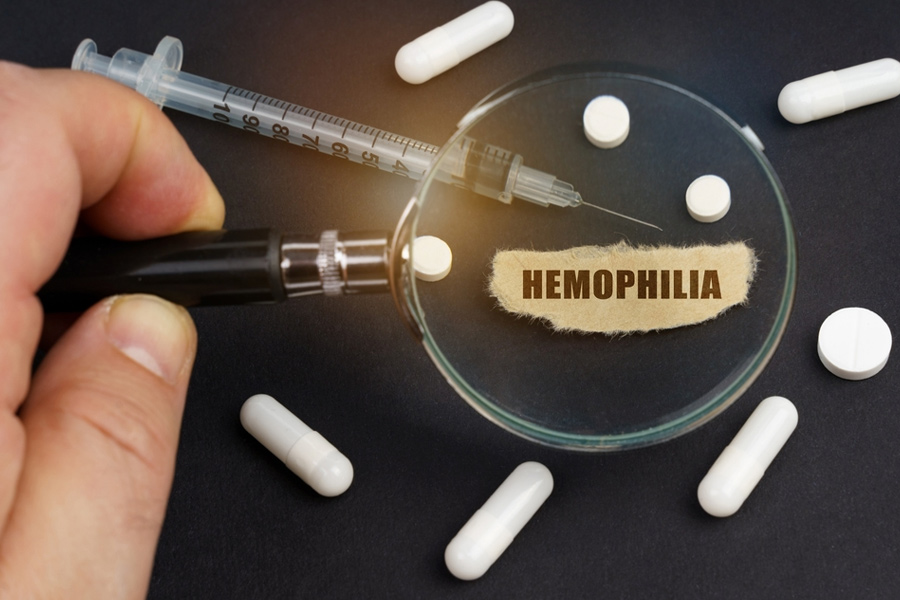
Genes are the building blocks of life that determine our traits and functions. They are inherited from our parents and located on chromosomes, which are thread-like structures found in the nucleus of cells that carry DNA and proteins. While some genetic variations lead to unique traits, others can cause inherited disorders, like haemophilia. If it is the first time you are hearing of it, it is all the more reason why you should continue reading. The OnlyMyHealth team interacted with Dr Kunal Sehgal, Managing Director and Chief Pathologist, Neuberg Sehgal Path Lab, who explains the genetic disorder and shares who could be more at risk for it.
Table of Content:-
Also Read: Study Finds New Gene Treatment May Lower Bleeding Risk In Hemophilia Patients
What Is Haemophilia?

Dr Sehgal describes haemophilia as a rare genetic disorder where the blood doesn’t clot properly due to a deficiency in clotting factors, which are proteins needed for blood clotting. This leads to prolonged bleeding after injuries and can cause spontaneous bleeding episodes, he adds.
According to the World Federation of Hemophilia (WFH), there are an estimated 8.15 lakh cases of haemophilia worldwide, of which only 3,47,026 are diagnosed, with 276,900 cases being severe haemophilia, as reported by a study published in Dovepress.
While nearly all people with haemophilia in high-income countries are diagnosed, this number drops to as low as 12% in lower-income countries, a 2023 study published in the Research and Practice in Thrombosis and Haemstasis found, highlighting the disparity in care, which was particularly evident in the age of diagnosis.
In high-income countries, people with severe haemophilia were typically diagnosed within the first year of life, whereas in low- and middle-income countries, the average age of diagnosis was around 35 years.
Are Men More Likely To Develop Haemophilia Than Women?

Haemophilia occurs due to a mutation in the HEMA gene located on the X chromosome. This gene's location on the X chromosome makes haemophilia more common in males.
Dr Sehgal explains, "Men are more likely to develop haemophilia because it is an X-linked recessive disorder. Men have one X and one Y chromosome, so if they inherit an X chromosome with the haemophilia gene mutation, they will have the disorder. Women, however, have two X chromosomes, so even if one X chromosome carries the mutation, the other X chromosome usually provides enough clotting factor. Women are typically carriers and rarely show symptoms."
Also Read: Causes And Symptoms Of Hemophilia In Kids
Common Symptoms Of Haemophilia
The main symptoms of haemophilia include:
- Prolonged bleeding
- Frequent bruising
- Joint pain and swelling (especially in knees, elbows, and ankles)
- Spontaneous bleeding episodes
“These symptoms can disrupt daily life, causing chronic joint pain, limited mobility, and prolonged recovery times after injuries or surgeries. Everyday activities may need to be modified to prevent excessive bleeding and manage discomfort,” says Dr Sehgal.
Complications Associated With Untreated Haemophilia And How To Reduce Risk

Untreated haemophilia can lead to severe complications such as chronic joint damage due to repeated bleeds, which can result in arthritis or joint deformities, warns the doctor.
He adds that there’s also a risk of internal bleeding in organs, particularly the brain, which can be life-threatening. Anaemia and prolonged blood loss can also occur, especially with regular untreated bleeding episodes.
Therefore, it is important to note that men with haemophilia make lifestyle adjustments that minimise the risk of injury. This includes avoiding high-impact sports, wearing protective gear, engaging in low-impact activities like swimming or walking, and maintaining a healthy weight to reduce stress on joints. Regular physical therapy and exercises to strengthen muscles around joints can also help stabilise them and prevent bleeding, Dr Sehgal concludes.
Also watch this video
How we keep this article up to date:
We work with experts and keep a close eye on the latest in health and wellness. Whenever there is a new research or helpful information, we update our articles with accurate and useful advice.
Current Version